The Serendipitous Compendium is back for a second season and I am delighted to be involved in a segment called The Doctor’s Dozen. Over forthcoming weeks, I’ll be introducing listeners to various artists – thirteen in all – and linking them together into an imaginary art historical circle. Inspired by the context in which the artworks were made, I’ll be discussing subjects as diverse as photomontage, German satire, Merz collage, Pop, Bloomsbury and Camden Town. Beginning with an artist who returned time and time again to the beautiful Maine coast, we’ll travel back and forwards in time and across continents in the pursuit of the stories behind extraordinary art and the people who produced it.
So where do we start?
When I last visited John, your host of the Serendipitous Compendium, we spent a happy day the Portland Museum of Art, and we both found ourselves drawn to one particular work. Here’s a photo I took of the painting at the time.

The title is Matinicus and it was painted by George Bellows (1882-1925) in 1916. I was surprised to see such a bright and joyful work by an artist I had long associated with gritty images of urban life in New York. As the museum label states, here Bellows captured a sense of the island’s bustling waterfront through the jumble of fishing shacks, lobstertraps and boats. The scene is animated through the artist’s thickly textured brushwork and lurid, non-naturalistic colours exemplified by the yellow cow on the left.
Bellows was a student of Robert Henri who was a leading figure in the Ashcan School of American Realism, and he came to notice in 1908 when he and other pupils organised an exhibition of urban studies.
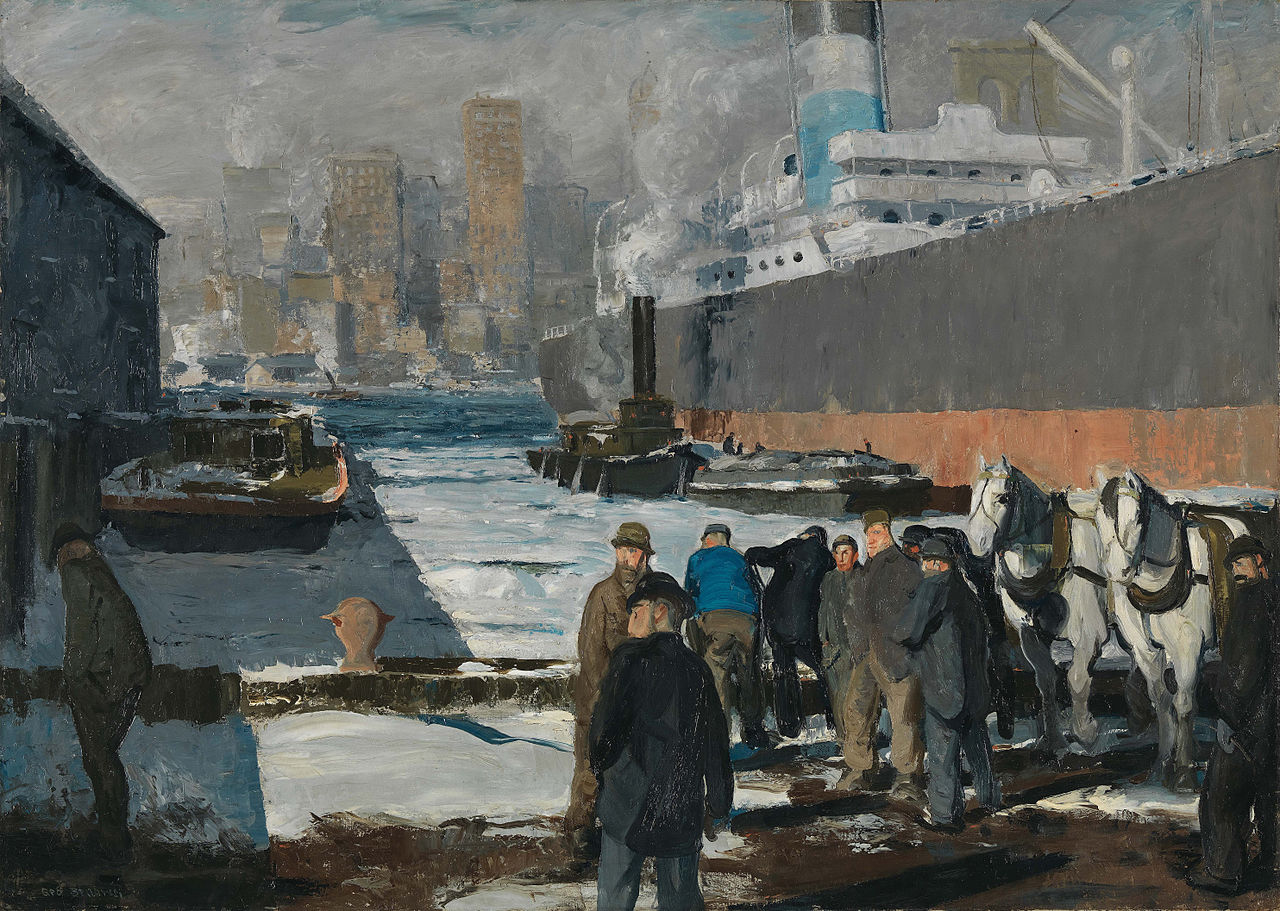
His New York scenes depicted the crudity and chaos of working class people and neighbourhoods and sometimes satirised the upper classes.
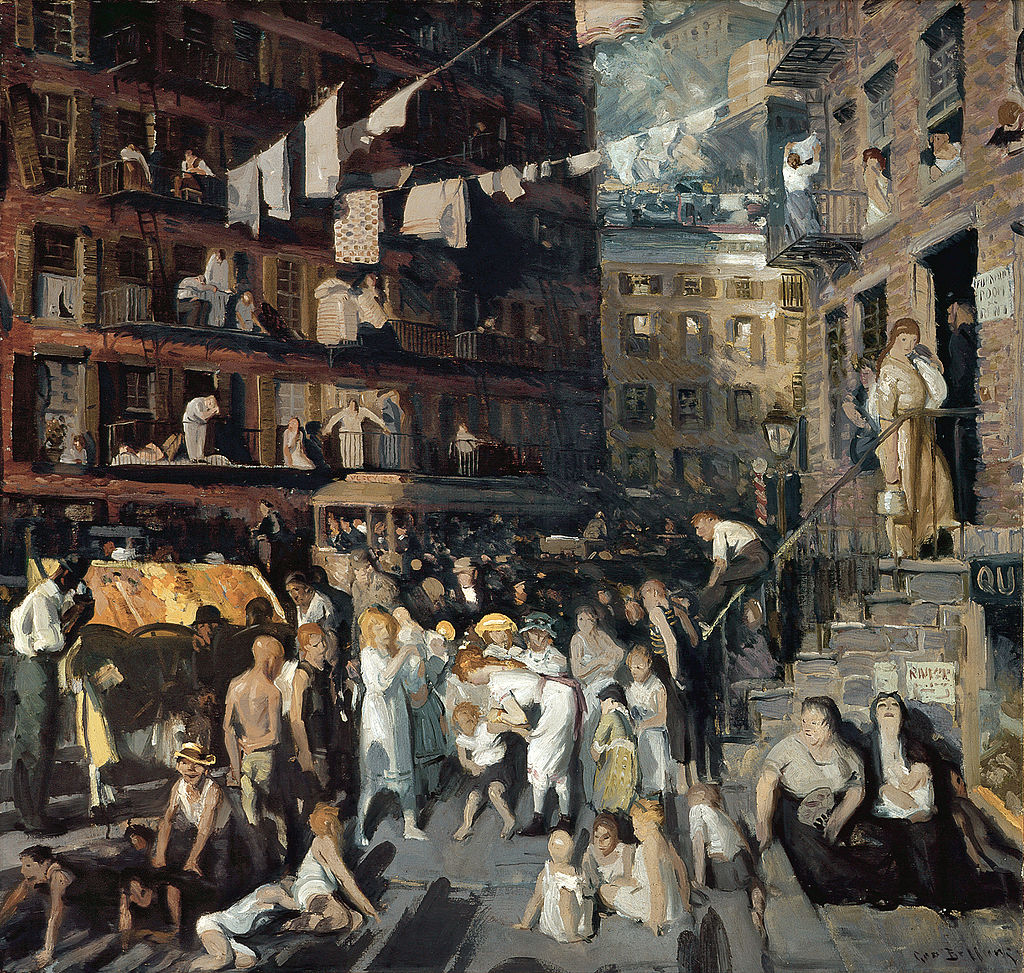
Like Henri, Bellows started to summer in Maine, painting seascapes on Monhegan and Matincus islands.
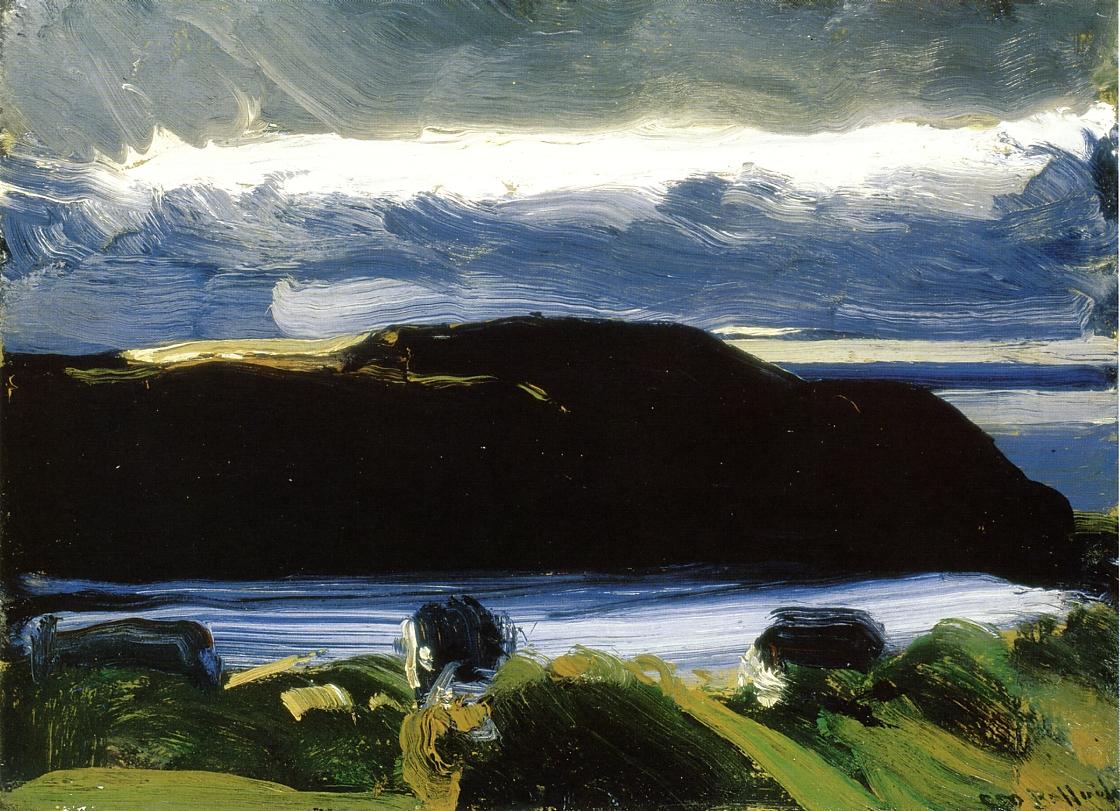
But it was Bellows’ paintings portraying amateur boxing matches that were his signature pieces.
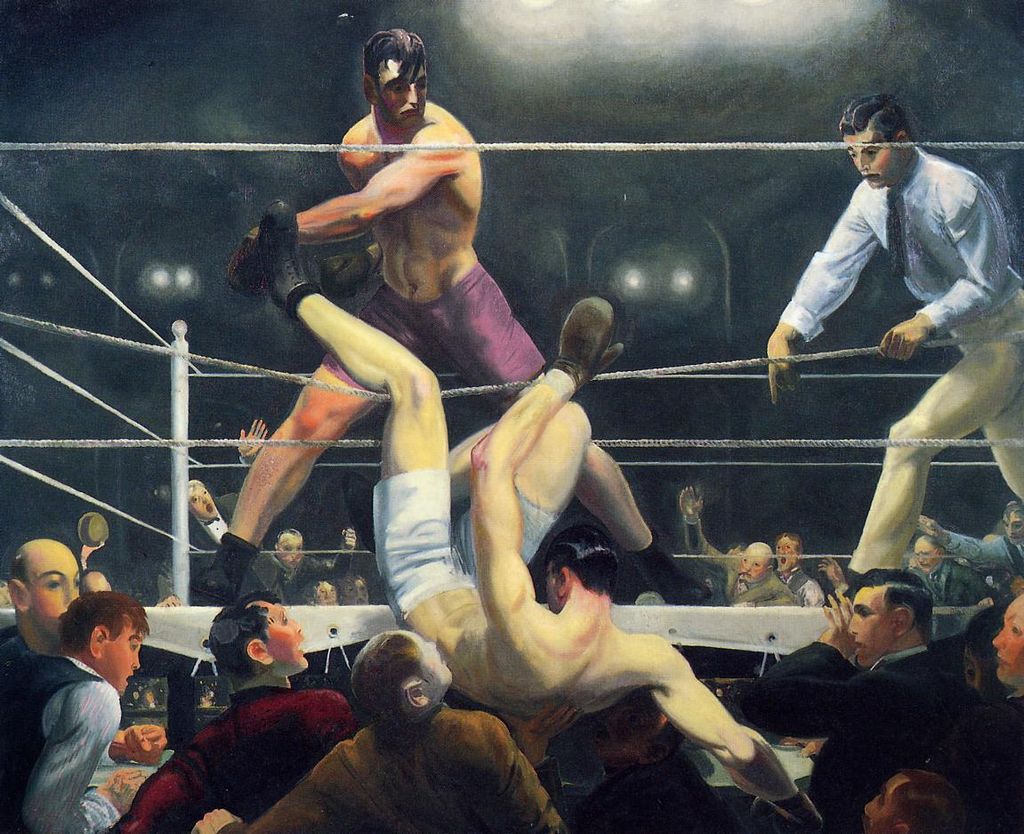
Bellows was politically active and associated with what was known as the Lyrical Left. He publicly supported US intervention in WWI and created a series of works graphically depicting the atrocities committed by Germany.
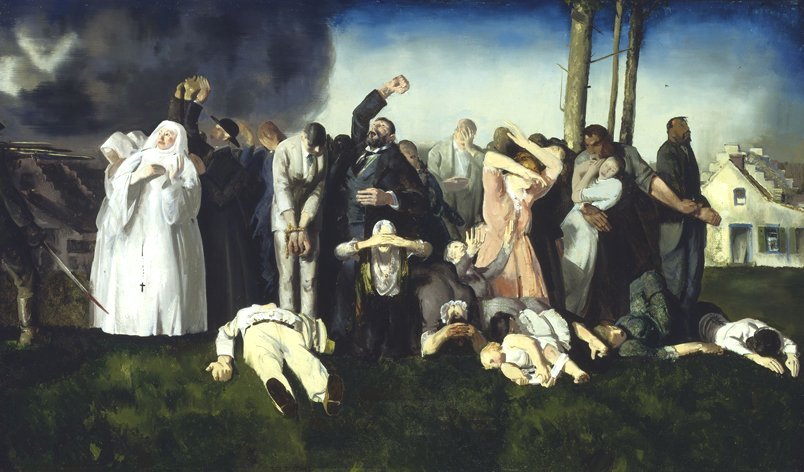
The idea of an American artist using his work to bring attention to the events of the war, made me think of a German artist whose art served a similar purpose. His name is George Grosz, and he’s the next artist I’ll be discussing next in the second part of the Doctor’s Dozen.








